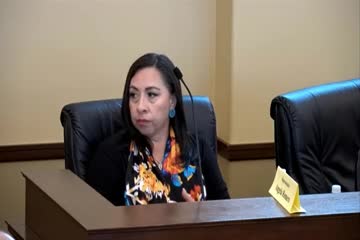Concerns Rise Over Class Size Impact on Education Quality
October 16, 2024 | Education Interim Committee, Utah Interim, Utah Legislative Branch, Utah
This article was created by AI summarizing key points discussed. AI makes mistakes, so for full details and context, please refer to the video of the full meeting. Please report any errors so we can fix them. Report an error »

In a recent government meeting, concerns were raised regarding the implementation of a new educational program, specifically focusing on class sizes and their impact on teaching effectiveness. Senator Riebe highlighted the challenges faced by educators, particularly in classrooms with large student populations, noting that many teachers currently manage classes of 34, 27, and 22 students. With a proposed budget of $300 million aimed at hiring 3,000 teachers, Riebe questioned whether the funding would genuinely supplement classroom resources or merely replace existing support.
The discussion turned to research on class sizes, with experts acknowledging that while studies indicate no significant learning decrements in classes of up to 45 students, there are notable benefits when class sizes are reduced to 18 or fewer. Dr. Reitzel and Dr. Fossen, both former educators, shared their experiences of managing large classes, emphasizing the fatigue and instructional challenges that arise as class sizes increase.
Despite the research suggesting a range where class sizes do not significantly impact learning outcomes, educators and parents alike expressed a strong desire for smaller class sizes. Representative Johnson echoed this sentiment, stating that constituents frequently request reductions in class size, arguing that smaller classes would enhance educational outcomes and overall student performance.
The meeting underscored a critical dialogue about the balance between funding allocation and the practical realities of classroom environments, with a clear call from educators for legislative action to prioritize smaller class sizes in future educational policies.
The discussion turned to research on class sizes, with experts acknowledging that while studies indicate no significant learning decrements in classes of up to 45 students, there are notable benefits when class sizes are reduced to 18 or fewer. Dr. Reitzel and Dr. Fossen, both former educators, shared their experiences of managing large classes, emphasizing the fatigue and instructional challenges that arise as class sizes increase.
Despite the research suggesting a range where class sizes do not significantly impact learning outcomes, educators and parents alike expressed a strong desire for smaller class sizes. Representative Johnson echoed this sentiment, stating that constituents frequently request reductions in class size, arguing that smaller classes would enhance educational outcomes and overall student performance.
The meeting underscored a critical dialogue about the balance between funding allocation and the practical realities of classroom environments, with a clear call from educators for legislative action to prioritize smaller class sizes in future educational policies.
View full meeting
This article is based on a recent meeting—watch the full video and explore the complete transcript for deeper insights into the discussion.
View full meeting

